Discrete Geometry
Concept Map
Discrete Geometry explores the properties of countable geometric entities like points and polygons, impacting technology and design. It's essential in computer graphics, urban planning, and architectural design, influencing 3D rendering, network optimization, and structural integrity. Advanced applications include Discrete Differential Geometry, vital for computer graphics and robotics, and algorithms for efficient geometric processing.
Summary
Outline
Exploring the Fundamentals of Discrete Geometry
Discrete Geometry is a mathematical discipline that investigates the characteristics and interrelations of geometric entities that are discrete and countable, such as points, lines, and polygons. It contrasts with classical geometry, which concerns itself with continuous entities. Discrete Geometry is crucial in fields like computer science, cryptography, and combinatorics, as it provides a framework for bridging abstract mathematical theories with tangible applications. It plays a pivotal role in the analysis of discrete spatial patterns and configurations, which can be seen in the strategic considerations of chess, the tessellation of mosaics, and the structuring of digital communication networks.The Impact of Discrete Geometry on Technology and Design
Discrete Geometry profoundly impacts technology and design, influencing sectors such as computer graphics, urban planning, and architectural design. In the realm of computer science, it is foundational to the creation of algorithms that enable the rendering of 3D graphics, the optimization of network topologies, and the construction of efficient data structures. For instance, the rendering of intricate 3D models in video games and simulations is made possible through discrete geometric algorithms that ensure computational efficiency. In urban planning, principles of Discrete Geometry inform the design of road networks and the spatial distribution of buildings to enhance functionality and accessibility. Architectural designs frequently employ discrete geometric patterns to achieve a synthesis of aesthetic appeal and structural integrity, as seen in the meticulous layouts of tiling.Discrete Geometry in Daily Experiences
Discrete Geometry is not merely an academic subject; its principles permeate our daily lives and are integral to various everyday activities. Strategic games such as Tetris and chess require spatial reasoning and the manipulation of objects, which are rooted in discrete geometric principles. The layout of pedestrian pathways in parks and the organization of urban spaces, where city blocks and transit systems are designed for optimal flow and convenience, are practical manifestations of Discrete Geometry. These instances illustrate the ubiquitous application of discrete geometric principles in both recreational and urban contexts.Core Principles of Discrete Geometry
Discrete Geometry is built upon several key concepts and areas of study. Polyhedra, which are three-dimensional solids bounded by flat polygonal faces, are fundamental to the field and underpin many of its more complex theories. Convex geometry, a subfield of Discrete Geometry, concentrates on convex sets and their characteristics, which are essential for addressing optimization challenges and are closely related to linear programming. Computational geometry, which intersects with Discrete Geometry, tackles intricate problems in computer science and robotics by developing algorithms for the efficient processing of geometric information. These core principles are vital for comprehending the structure of discrete geometric forms and their multifaceted applications across different domains.Advanced Developments and Applications in Discrete Geometry
Advanced topics in Discrete Geometry, such as Discrete Differential Geometry (DDG), expand upon the foundational concepts and integrate them with cutting-edge technological applications. DDG adapts the principles of differential geometry to discrete settings, providing methodologies for the analysis and simulation of complex geometric forms. This is particularly relevant in the field of computer graphics, where it enables the lifelike rendering of curved surfaces and dynamic simulations. Moreover, discrete geometric constructs like Delaunay Triangulation and Voronoi Diagrams play a critical role in technological applications ranging from Geographic Information Systems (GIS) to the navigation systems of autonomous vehicles. For example, Voronoi diagrams are utilized for the strategic placement of cellular towers to improve network coverage. In the field of robotics, Discrete Geometry facilitates motion planning and spatial reasoning, empowering robots to navigate and make decisions based on geometric algorithms.The Convergence of Discrete and Computational Geometry
The convergence of Discrete and Computational Geometry is evident in their collaborative efforts to devise efficient algorithms for solving complex problems. Pathfinding algorithms, such as Dijkstra's and A*, are rooted in discrete geometric concepts and are indispensable for applications like network routing, artificial intelligence in gaming, and maze resolution. These algorithms exemplify the synergy between discrete geometric structures and computational processes. The interdependent relationship between these fields is crucial, with Discrete Geometry providing the structural framework for defining and manipulating shapes within computational models, which in turn facilitates precise tasks of recognition and analysis in various computer science applications.Show More
Definition and Importance
Characteristics and Interrelations
Discrete Geometry investigates the properties and connections of countable geometric entities
Contrast with Classical Geometry
Discrete Geometry differs from classical geometry in its focus on discrete and countable entities
Applications in Various Fields
Discrete Geometry plays a crucial role in computer science, cryptography, and combinatorics, among other fields
Impact on Technology and Design
Influence on Computer Science
Discrete Geometry is foundational in computer science, enabling the creation of algorithms for 3D graphics, network optimization, and data structures
Applications in Urban Planning
Principles of Discrete Geometry inform the design of road networks and spatial distribution of buildings in urban planning
Use in Architectural Design
Discrete Geometry is frequently employed in architectural design to achieve a balance of aesthetics and structural integrity
Everyday Applications
Role in Strategic Games
Discrete Geometry is essential in strategic games like Tetris and chess, which require spatial reasoning and object manipulation
Practical Manifestations in Urban Spaces
Discrete Geometry is evident in the layout of pedestrian pathways and organization of urban spaces for optimal flow and convenience
Ubiquitous Presence in Daily Life
Discrete Geometry principles are integral to various everyday activities, from recreational games to urban planning
Key Concepts and Advanced Topics
Polyhedra
Polyhedra, three-dimensional solids bounded by flat polygonal faces, are fundamental to Discrete Geometry
Convex Geometry
Convex geometry focuses on convex sets and their characteristics, which are crucial for addressing optimization challenges
Computational Geometry
Computational geometry tackles complex problems in computer science and robotics through the development of efficient geometric algorithms





